The word Maotai has been appearing frequently in the eyes of young people lately.
Because they're getting more and more press.
When "i Moutai" was launched, you could see the app topping the App Store free list on the same day; Moutai launched a mini version of Feitian Maotai, selling 100ml for 399 yuan per bottle, and some people immediately analyzed what was so good about this mini version; and then cooperated with Mengniu to launch ice cream, melting this kind of wine, which is very important in the hearts of the elders, into sweet ice cream for the younger generation to eat.
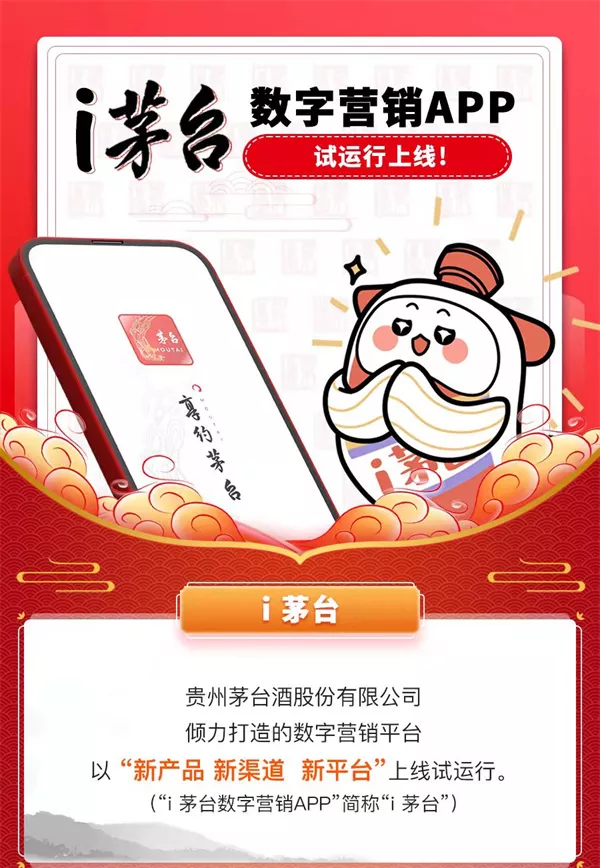
▲ i Maotai
The online, mini version, cross-border sale of ice cream ...... Moutai does not go at the top of the current business wave, but it is definitely up to date. Compared to the elders' beloved brand that young people originally held in their hearts, Moutai is a bit different this time.
Moutai has made so many changes to try to ground the brand and make it known to young people as well. This is most likely because, young people don't even love baijiu anymore - whether it's Maotai or Jiang Xiaobai.
Young people reject liquor, buy only for investment gifts
How unpopular liquor is among the younger demographic is evident from the brand Jiang Xiaobai.
It's a very playful brand that was once called 'the advertising agency of the liquor world'.
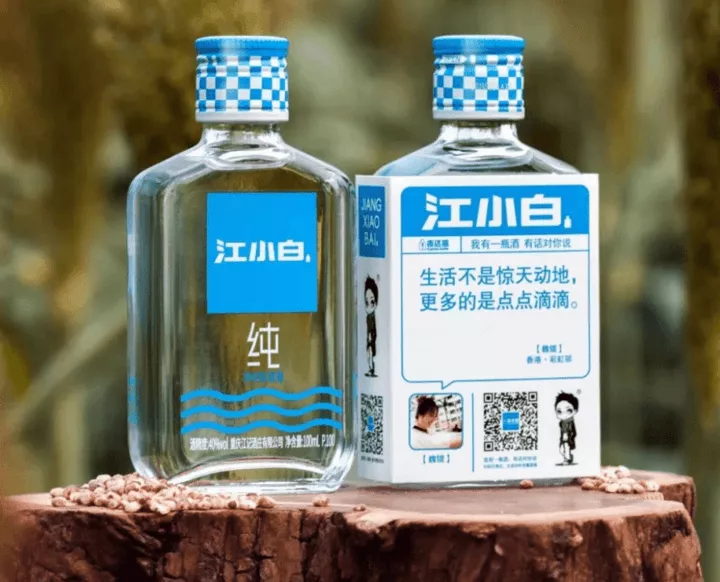
▲ Jiang Xiaobai's presence has thrown some shocks on the liquor scene
Tao Shiquan, the founder of Jiang Xiaobai, once recommended Jiang Xiaobai to 100 people on the street, and this grounding experience was recorded on Shake. In the short video, some customers were outspoken to Tao Shiquan, saying they didn't want it even if it was free, and there were many who firmly rejected it when they heard the brand name. Not to say whether the wine is good or not, the founder alone so open-minded and understand the marketing of the brand is actually difficult to fail.
Unfortunately, what Jiang Xiaobai aspires to be is "the first sip of white wine for young people".
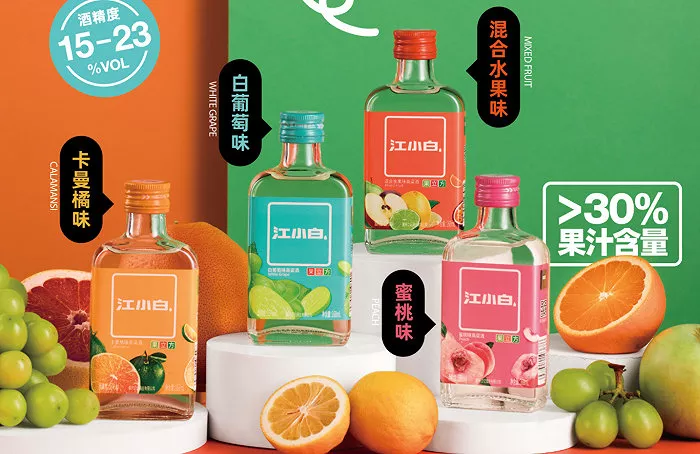
▲ Jiang Xiaobai's Fruity Wine
For the baijiu audience, Jiang Xiaobai is not 'old-fashioned' enough, its wine tastes like watered-down impurity; and for young people, they simply don't need this sip of baijiu.
Bug is the only one of my close friends who has downloaded the i Maui app, although it's now uninstalled.
He himself is not an audience for liquor, and his impression of it is that it is like a fire in his throat after drinking it, very choking and spicy. "Drinking baijiu is suffering, but drinking good baijiu is just not that suffering" is the comment he gives. The fact that he downloaded i Moutai even though he dislikes it so much is entirely for the future.
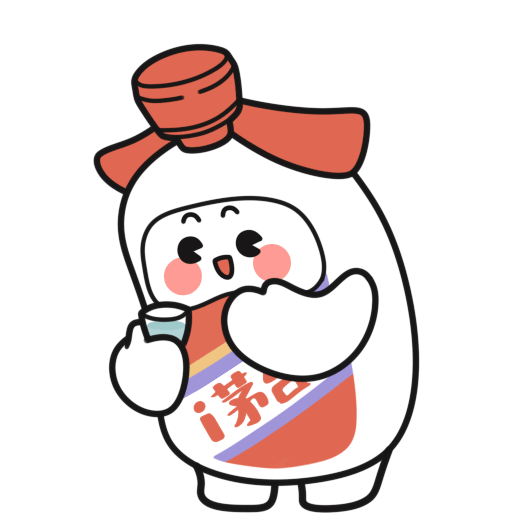
▲ i Maotai Mascot
One was to invest his money with the intention of reselling the expensive ones he grabbed on the official platform and making a few hundred on the resale. Unfortunately, he never won, and that became the reason why he unloaded. The second is to make some 'grand plans' for his life, although he doesn't like it, but the elders around the little bug do. He had been in a relationship with his girlfriend for 5 years and thought it was time to prepare a little something for meeting his parents, and Moutai was what he was looking for - even if they didn't drink it, it would definitely show sincerity.
Bug usually drinks, and when it's hot, he likes to drink beer, not so much to get drunk, but for the 'thrill' of CO2 hitting his throat. These are the things that high proof and throat choking white wine can't give.
Cat Bear, who is a teacher at the university, also dislikes white wine, "I drank it once and never wanted to try it again. In Cat's opinion, white wine, even Jiang Xiaobai's improved taste, is a bit too much for her.
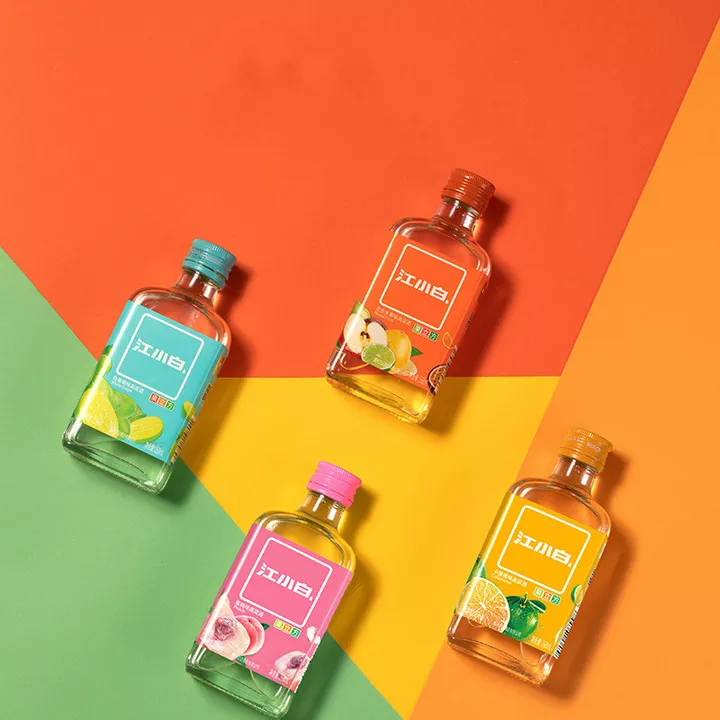
▲ Modified fruity white wine
Specifically, when it comes to parties where friends gather, it is not acceptable for everyone to drink high alcoholic beverages (especially white wine) until they break. If friends drink too much, the trip after the meal is cancelled and the sober person is responsible for sending them home one by one, there is no point in partying at all. On the contrary, some low alcohol can keep the party atmosphere just right, slightly drunk and not affect the continued fun.
Her preferred way of drinking is probably the kind that sits at the end of the drinking contempt chain - a little bit of foreign wine with drinks like Sprite, Coke, wake-up calls and Fanta that are good and not intoxicating. Not liking white wine and preferring lower strength fruit and sparkling wines isn't just Cat Bear's choice, she told us.
The students I take drink the most white wine in the Jiang Xiao Bai category, but most of them are still in the beer and Rejuveno category.
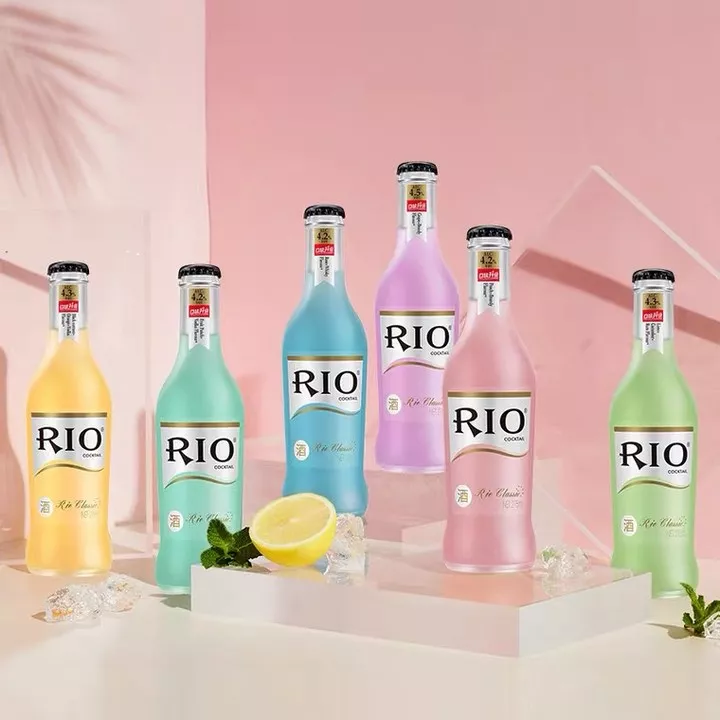
▲ Rio Alcoholic Beverages
White wine + everything young people like, will it get better?
Almost every brand in the circuit today suffers from 'fear of old age' because they need to tell a high growth story. The established customer base is mature and stable, and it is only when you get financially independent young people to start taking interest in your product that you are on a healthy growth path.
Unfortunately, young people nowadays buy Maotai either as a gift or to appreciate in value. It's a rare comeback for the 'young leek' to rise up, so to speak, and try to make a few hundred on the previous generation through their luck of winning the lottery. But for the liquor industry, it's a bad sign - the green and the yellow.
The existing customers are aging and the younger ones are not interested. In this case, getting younger customers interested has become the top priority for liquor companies.

▲ Different types of white wine
To get young people to like it, go ahead and find out what young people like. Coffee and specialty drinks are part of the answer that companies get, and fusing the two categories becomes the direction that many brands try.
Young people don't like high-count white wine, so it seems good to start by blending it with other ingredients to make cocktails and let the young drink-lovers transition slowly. This is not just an idea for alcoholic beverage brands, but many bar operators are also experimenting with white-wine based mixology innovations that just haven't caught on yet.
In an interview with Southern Metropolis Daily, Ho Ying Wai, founder of Temple Front Ice House, a bar rated as one of Asia's Top 50 bars, said he could count on five fingers the number of bars in China that use liquor to mix their drinks. But with the lack of popularity of baijiu bartending, the availability of 12 flavors of Chinese baijiu can bring more flexibility to cocktail mixing.
We experimented with 50% white wine and 50% gin to bring out the aroma of the white wine without overpowering it, making it very stylish for the younger guests.
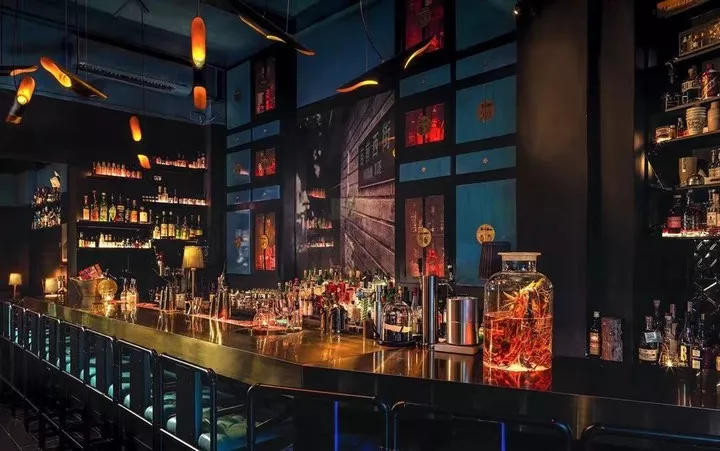
▲ Ice House in front of the temple
Bars are active, and alcoholic beverage brands are even more active.
Fenjiu, Wuliangye and Mengzhi Blue have then often taken it upon themselves to associate themselves with cocktails, and not only do the brands not get angry when others use their products as a base spirit to make them, but they also give kudos. Many brands have launched competitions to make Chinese liquor cocktails, with the winner receiving a prize.
The old brands are so wealthy that they are "spreading money" to develop new categories, while the new brands are rooted offline and intend to "surround the city in the countryside".
The new alcoholic beverage brand Tang Bai is not only actively working with bars in Shenzhen, Chengdu and Guangxi to launch cocktails using Tang Bai as the base spirit, but also actively teaching people online how to make a cocktail with their own product that has a big difference in taste, just in the hope that you will love the house and fall in love with Baijiu.
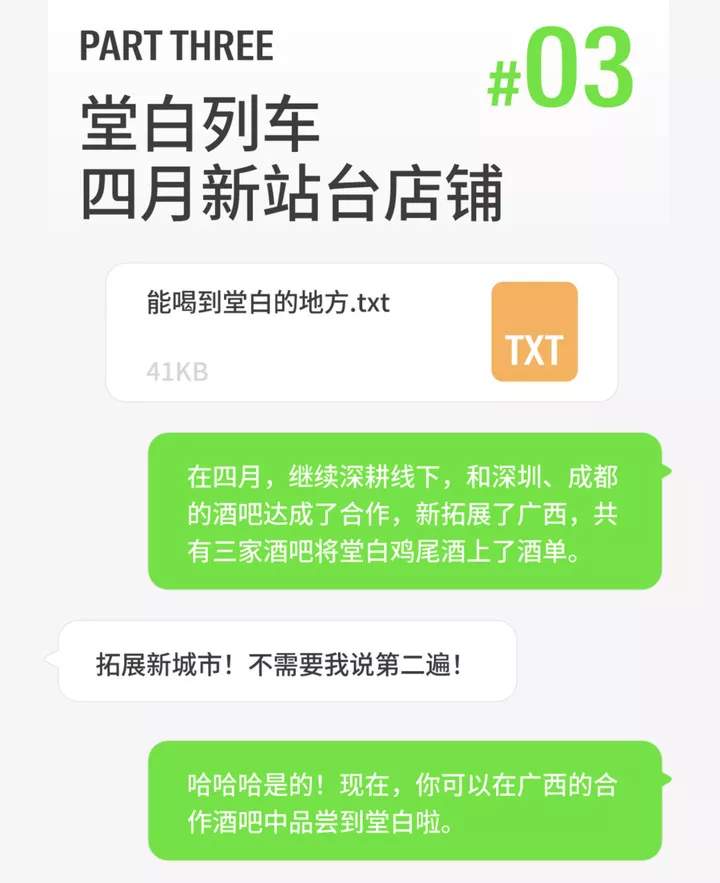
▲ New alcoholic beverage brand Tangbai and bar collaboration
It's not just cocktails that are being targeted, it's also coffee. 5.6-6.6, Baijiu brand Tang Bai has launched a variety of Baijiu coffee specials with six local coffee shops in Shenzhen, and they're calling the campaign 'Coffee Plus Tang'. I don't know if it's good or not, but the score in the novelty column on the test paper is already full.
Tea drinks and coffee are already very 'rolled', and now here comes liquor. I wouldn't be surprised to see any brand launch "Baijiu XX tea" in the future, and I hear that the Moutai International Hotel now has a new tea drink in the Baijiu category.
The three giants of the beverage industry have been paired together, never mind whether they are good or not, but this cross-border association and the gesture of lending each other heat has been posed correctly.
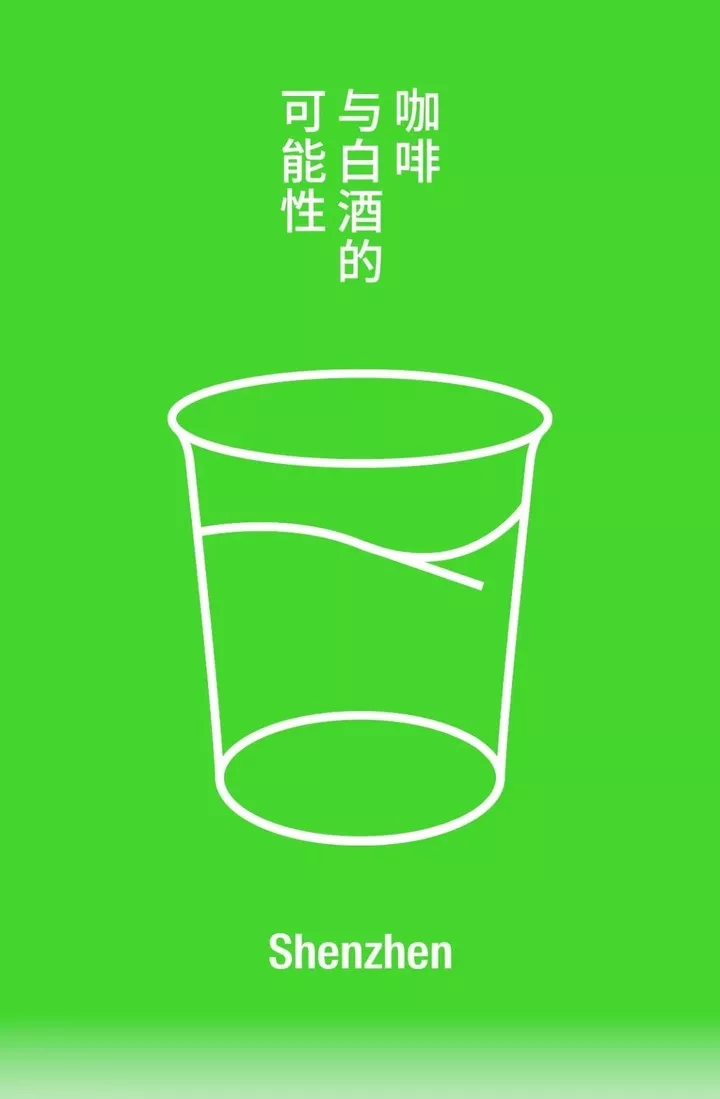
▲ White Wine X Coffee, a public image by Tangbai
The road has been pointed out by those who came before us, and it's no surprise that the later big brother Moutai also wants to pick a category to expand its user base. You may be able to experience all of the above in Maotai Town, but ice cream for liquor may be truly unique.
This is not just any ice cream, but a collaboration between Maotai and Mengniu to launch ice cream. The two major brands add up to something that doesn't look like a minor hit. This ice cream comes in 14 flavors, including Original Maotai and Vanilla Maotai, and it's currently the only one available at the Maotai International Hotel. The hotel revealed that these ice creams are priced in the $39.90-100+ range - selling for more than Haagen-Dazs.
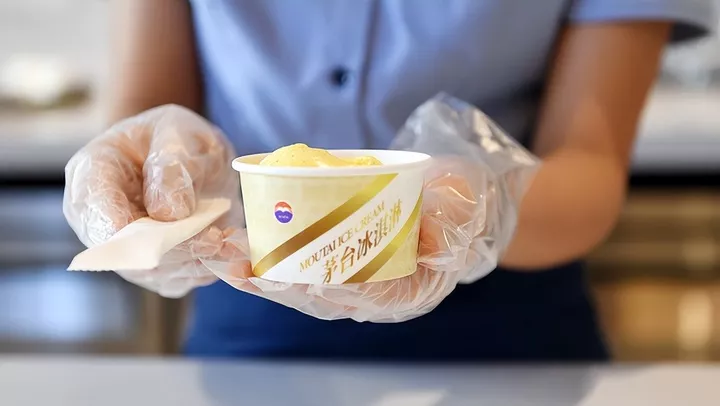
▲ Moutai Ice Cream
Considering that this ice cream has an alcohol concentration of 3% and uses Moutai wine as an ingredient, this ice cream is probably more expensive than the hottest Flying Moutai if you really count the percentage and value of Moutai. Users who tried this ice cream on site commented that it does have a saucy flavor, which may not be apparent if you drink the wine and then eat it, but overall it is a distinctly Maotai flavored ice cream (money flavor warning).
Does it all work when you do a blend with everything that young people like?
From strong to microbrews, the effort of white wine still depends on the whole
A friend who has tried the white wine cocktail special at the bar gave an unimpressed review. Tasting is good, but trying to drive sales with a linked drink like this is a bit difficult for him. The savvy consumer had done the math quickly after the tasting - a bottle of the cocktail base white wine sells for nearly 200.

▲ Church White
At this price, buying more high-count spirits is more than enough. The other high count spirits are more familiar to him and taste better, while the funky funkiness of the white wine and cocktail pairing will only give him a taste and it will still be hard to convert to a purchase.
The reason young people don't want to buy liquor is also simple. Chloe, who had seen her father get drunk on a regular basis, had a fundamental aversion to white wine; people who drank it could easily get others into trouble, and her experience of being coaxed into drinking half a glass of white wine by her elders under slight pressure as a child also made her uncomfortable with the drink. Even when she goes out with friends, she opts for mild fruit wines, and her favorite is still the less intoxicating rice wine.

▲ Rice wine such as drops of low sweet wine seems to be the opposite of white wine
Besides choking, high degrees, and dislike of the taste, another very important reason for the rejection of white wine is the disappearance of the culture of the drinking table among the younger generation.
It used to be that if you didn't drink, you didn't give face, and the better the wine, the more respectful you were. But the post-00s have sued four companies in a year through labor arbitration, so how can they not "strike hard" at the drinking culture? The younger generation previously refused to drink for reasons as mild as alcohol allergies or recent surgery, but now they just don't want to drink, and the last thing they want to drink is choking and high-count white wine.
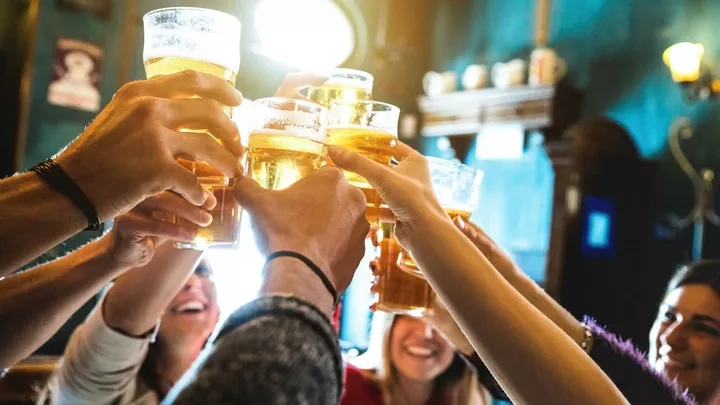
▲ Drinking table culture is seen as a bad habit by some young people
Although liquor brands are trying hard to infiltrate the youth group with coffee, cocktails and ice cream, it may be a long time before they can achieve the 'silent' effect.
Of course there is also the possibility that after some experimentation the brand has to admit that young people just don't like white wine.